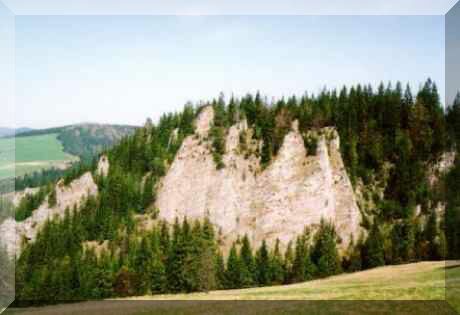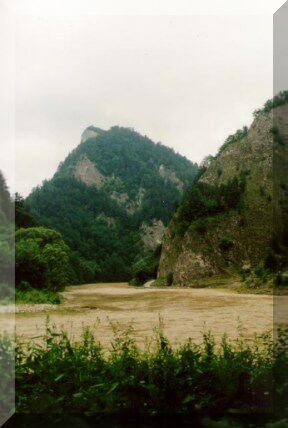

 is 982 m a.s.l. and the highest peak in the whole Pieniny - Wysoka - 1,050 m a.s.l. Plain rocky walls surrounded by forests, isolated rocks often in the form of needles contrasted with rounded shapes of hills or gentle slopes covered by meadows and fields are typical features of the local landscape. As a result of the diversified geological structure, various development stages of mineral and organic soils are found in the Park. The soils differ from very shallow to very thick, from stony to loamy, from acidic to alkaline. The two most common soil types are calcareous and brown soils.
is 982 m a.s.l. and the highest peak in the whole Pieniny - Wysoka - 1,050 m a.s.l. Plain rocky walls surrounded by forests, isolated rocks often in the form of needles contrasted with rounded shapes of hills or gentle slopes covered by meadows and fields are typical features of the local landscape. As a result of the diversified geological structure, various development stages of mineral and organic soils are found in the Park. The soils differ from very shallow to very thick, from stony to loamy, from acidic to alkaline. The two most common soil types are calcareous and brown soils.
 In the Pieniny there are stated 26 species of fish, 10 amphibian species, and 6 reptile species. Birds are very well investigated; 95 out of 160 species found in the area are nesting species. Rarities include: eagle owl, wall-creeper, rock thrush, pygmy owl, three-toed woodpecker, black woodpecker, and black stork. There are 60 species of mammals listed, the most interesting of which is Apodemus microps - a steppe element. Other interesting species include Alpine shrew and Crocidura suaveolens. The largest predator is lynx. The Dunajec river banks are the home for river otter.
In the Pieniny there are stated 26 species of fish, 10 amphibian species, and 6 reptile species. Birds are very well investigated; 95 out of 160 species found in the area are nesting species. Rarities include: eagle owl, wall-creeper, rock thrush, pygmy owl, three-toed woodpecker, black woodpecker, and black stork. There are 60 species of mammals listed, the most interesting of which is Apodemus microps - a steppe element. Other interesting species include Alpine shrew and Crocidura suaveolens. The largest predator is lynx. The Dunajec river banks are the home for river otter.